
MUD CITIES OF THE HADHRAMAUT
Central Yemen’s Remote Canyon Towns Nestled in between Desert Plateaus
Mud Cities of the Hadhramaut
When you fly over central Yemen’s Hadhramaut region, it looks like a vast, barren plateau of sandstone. But when you take a closer look, you can find deep canyons cut through the rock. Down at the bottom, you can see green palm-fringed oases, and villages constructed from the same mudbricks used for centuries line the sides of these wadis. Inside, abaya-clad women with pointy straw hats graze their goats along the ancient riverbeds. But bucolic life in these valleys is not as simple as it may appear; Al Qaeda continues to have a strong influence over these valleys, which also form the ancestral home of the Bin Laden family.

Football Town
Al Khuraibah, Hadhramaut, Yemen. February, 2020.
As the sun begins to set in the village of Al Khuraibah, deep in the Hadhramaut region, male students from the schools gather to play soccer. In between the afternoon and sunset prayers provides the perfect window of time for a soccer game.

The White Castle of Sif
Sif, Hadhramaut, Yemen. November, 2019.
Perched above the village of Sif, the cultural capital of wadi Do’an, lies this giant white house. It is built around the natural rock of the wadi, making it architecturally spectacular. These large homes generally house one large, extended family, as brothers tend to all live together under a patriarch with their wives and children.
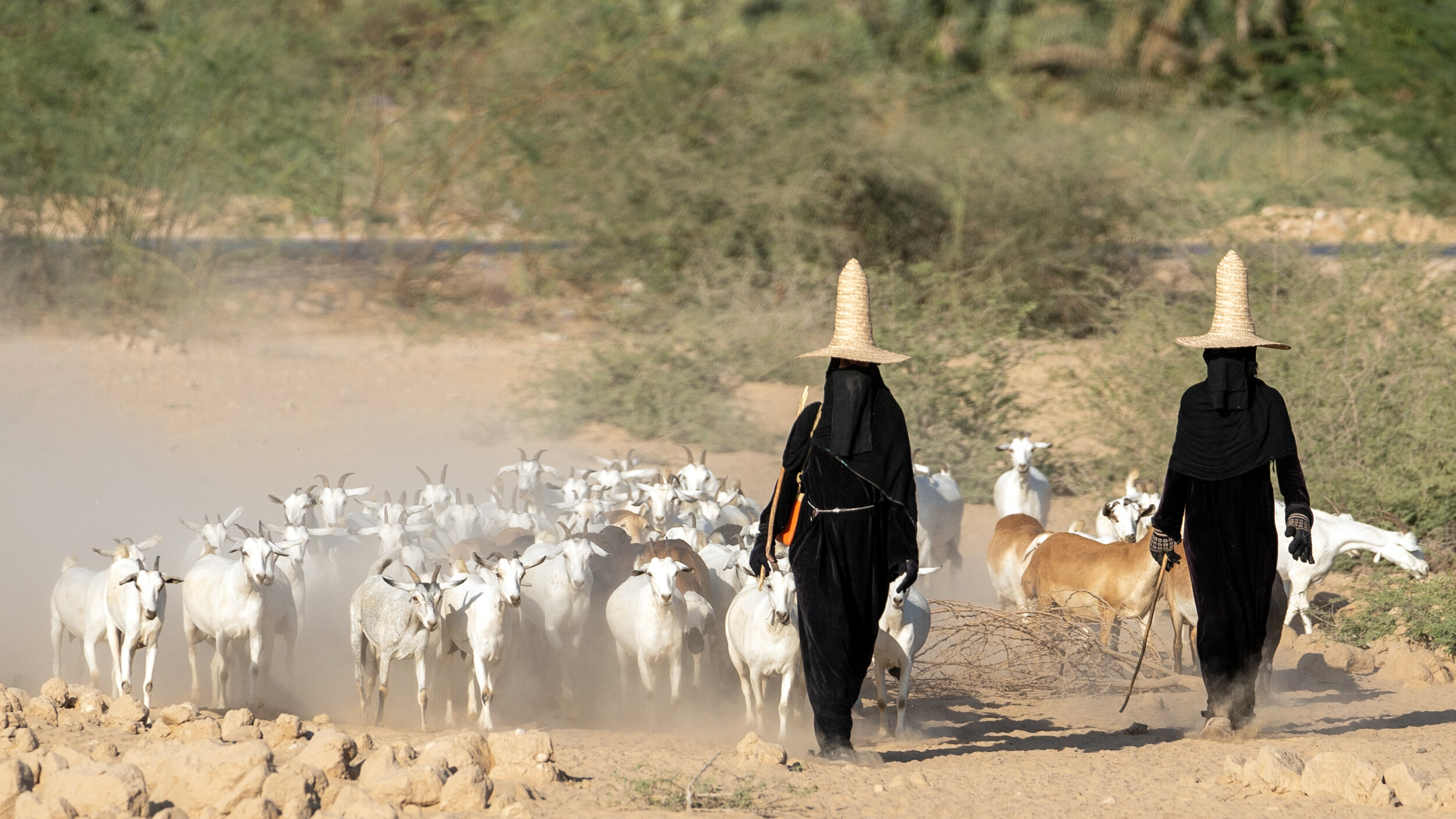
Witches of the Valley
Hawf, Hadhramaut, Yemen. November, 2019.
The women of the Hadhramaut and Do’an Valleys follow conservative Islamic dress— black abaya and niqabs all around. However, in this region, they are known for wearing tall, pointy straw hats to protect them from the extreme heat of being outside. The hats come in different forms and styles, depending on the exact location in the valley. Women are responsible for tending to the goats, so they can be spotted in the mornings bringing the goats out to feed, and in the late afternoon, when the goats have to return to their homes.



Life Inside Shibam
Shibam, Hadhramaut, Yemen. November, 2019.
Shibam is a UNESCO World Heritage site under threat. It is a living, breathing town of 7,000 inhabitants living in mud skyscrapers topping off around 13 stories. The bottom levels house goats, where as extended families occupy the upper floors. However, due to the conflict in Yemen, the presence of al-Qaeda in the Arabian Peninsula and the lack of funding for maintenance, the town is under constant threat. These scenes depict daily life from inside Shibam.

Class is in Session
Seiyun, Hadhramaut, Yemen. November, 2019.
A teacher stands in front of his class at a boys school in Seiyun. Seiyun is the largest “city” in the Hadhramaut Valley and is home to about 75,000 people, making it the economic centre of this region. Schools are gender segregated throughout Yemen and resources for students are teachers are scarce.

The Qat Seller
Seiyun, Hadhramaut, Yemen. February, 2020.
A boy sells qat from the back of an old truck just outside Seiyun. Qat is a plant which contains the alkaloid cathinone, a stimulant, which is said to cause increased focus, loss of appetite, and euphoria, much like a strong caffeine. Qat is so popular amongst Yemeni men that its cultivation consumes much of the country's agricultural resources. An estimated 40% of Yemen's water supply goes towards irrigating it. Many people across Yemen begin to shew just after lunch and well into the evening.
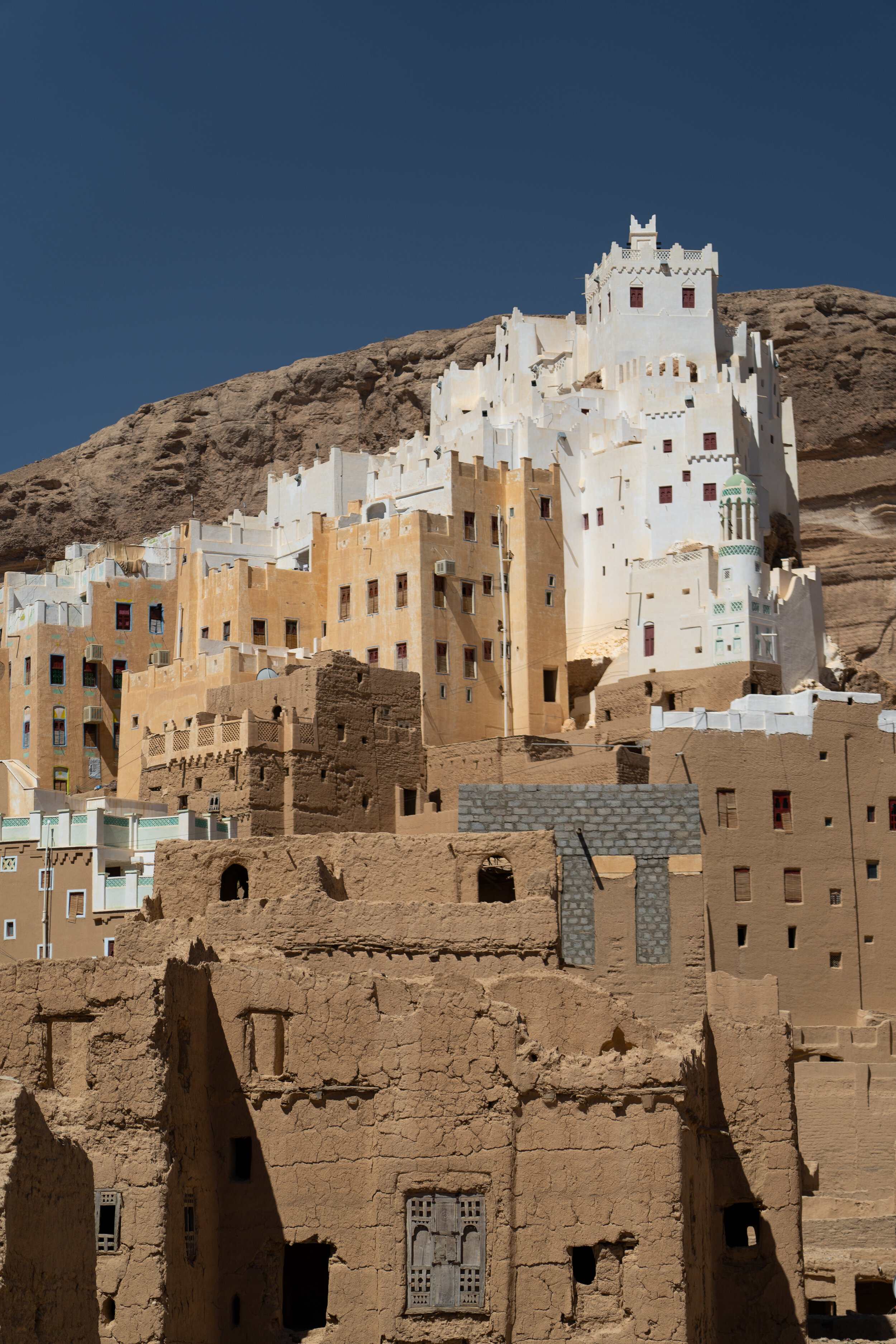


Scenes from Life Life in Wadi Do’an
Wadi Do’an, Hadhramaut, Yemen. February, 2020.
Top left: A view into the village of Sif, one of the cultural capitals of the Do’an (Dawan) valley, with its famous while castle dominating the skyline.
Top centre: A brick maker uses mud to form new bricks outside the town of al-Hajhrain in Wadi Do’an. He can earn roughly $15 a day doing this job, which, while not much, is still enough to support his family.
Top right: A man collects firewood in the town of al-Hajhrain. Wood burning stoves are still the norm across the valley, but wood is in short supply, making it essential to gather every dead branch one finds.
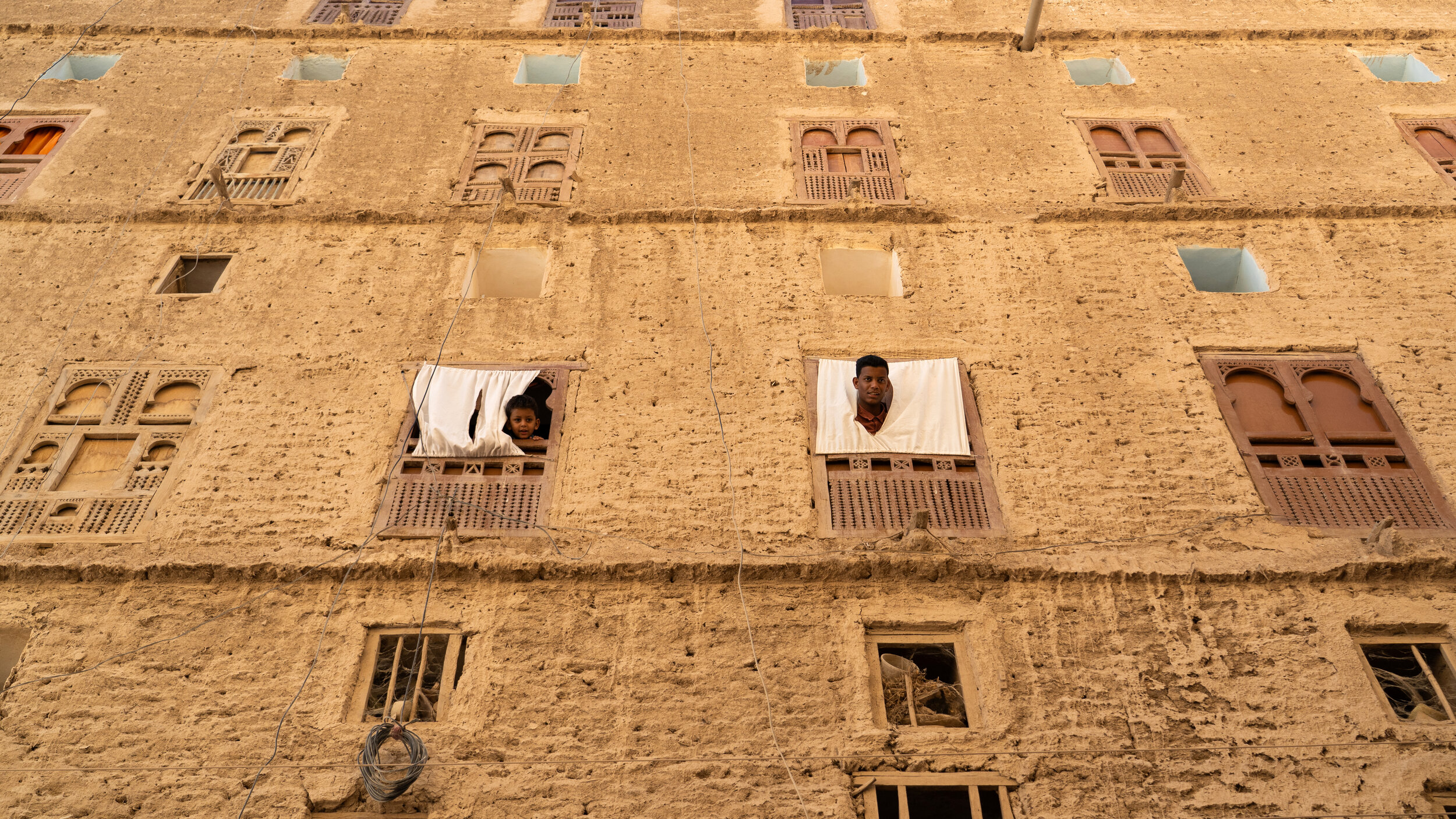
Peeking Out from Shibam Windows
Shibam, Hadhramaut, Yemen. February, 2020.
Two brothers peek out from their home in Shibam, Yemen to look at the foreigner down below. These incredible mud-brisk skyscrapers reach a maximum height of 13 stories and have been constructed in this method only using mud bricks and wooden support beams for hundreds of years.
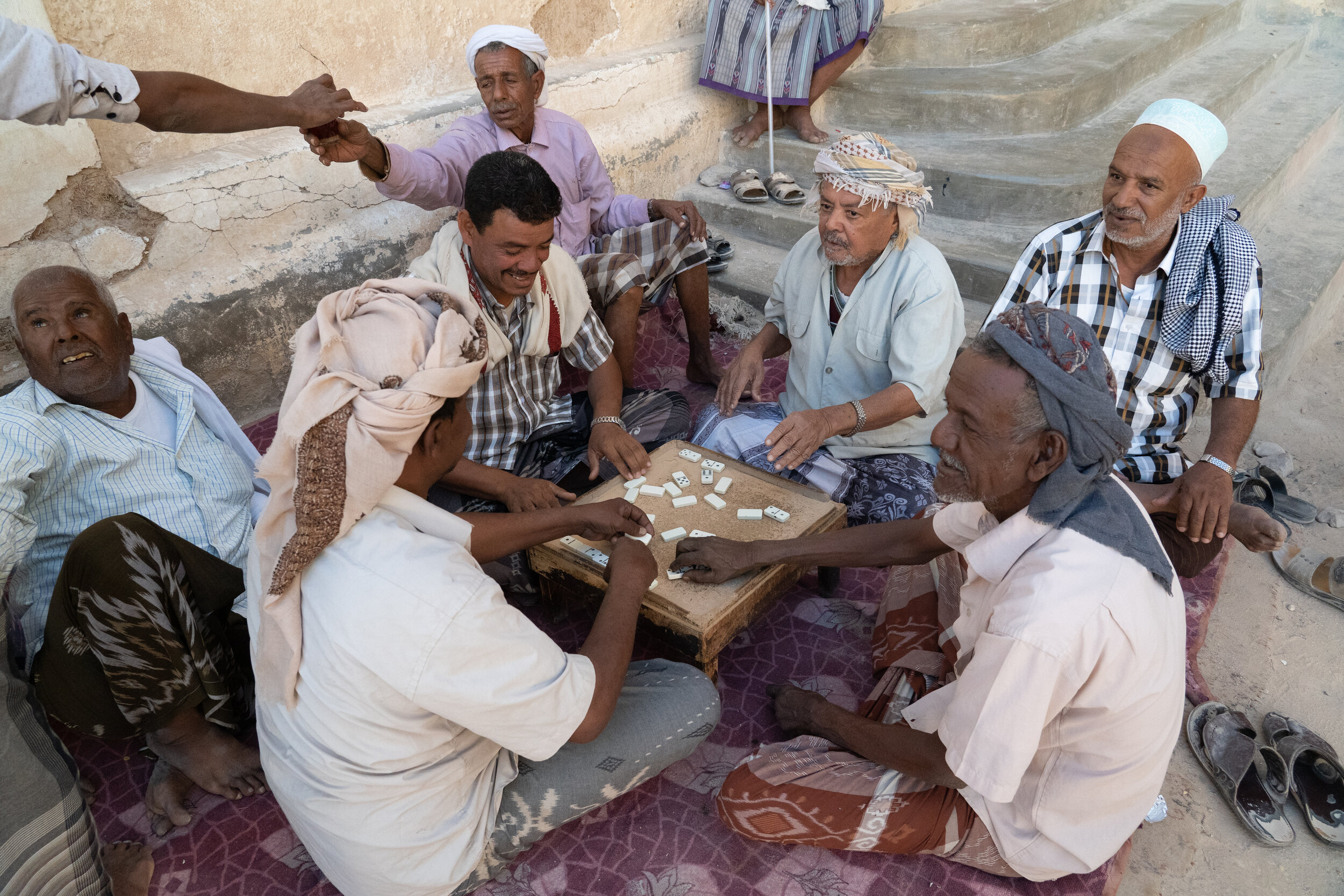
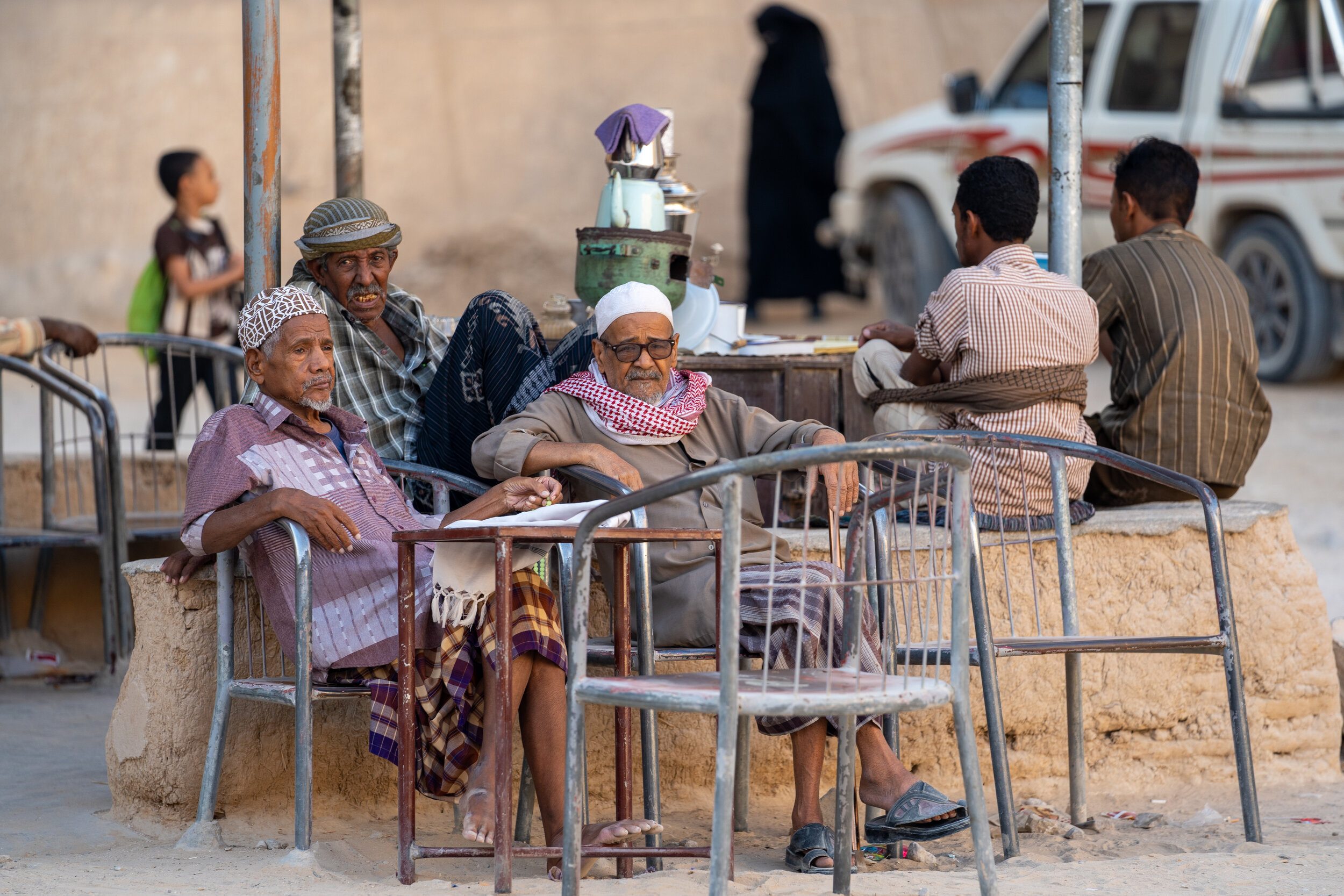
The Old Men of Shibam
Shibam, Hadhramaut, Yemen. February, 2020.
Retired Hadhrami men drink tea and play dominoes in Shibam. The social life for retired men in the Hadhramaut is very active, they can be seen chatting in groups across the region, sipping tea and playing games.
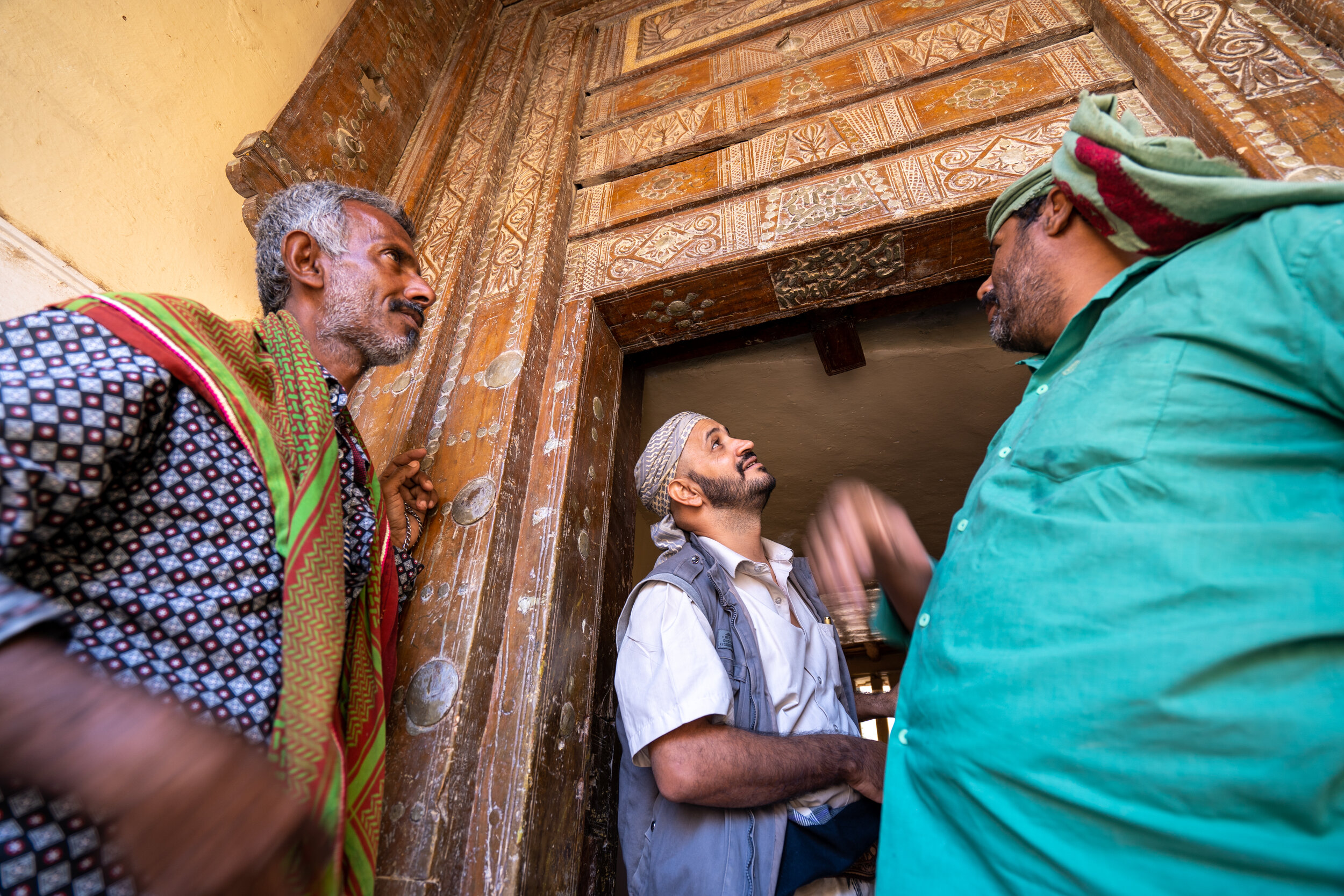
Aristocratic Doorways
Khilah Buqshan, Hadhramaut, Yemen. November, 2019.
Examining the doorway of the Buqshan Palace in Wadi Do’an is something one may easily overlook. But at over a hundred years old, this doorway screams Hadhrami aristocracy. It’s fully decorated with calligraphy in wood and metal, something fitting for the largest house-turned-hotel-turned-museum in the the Do’an Valley.
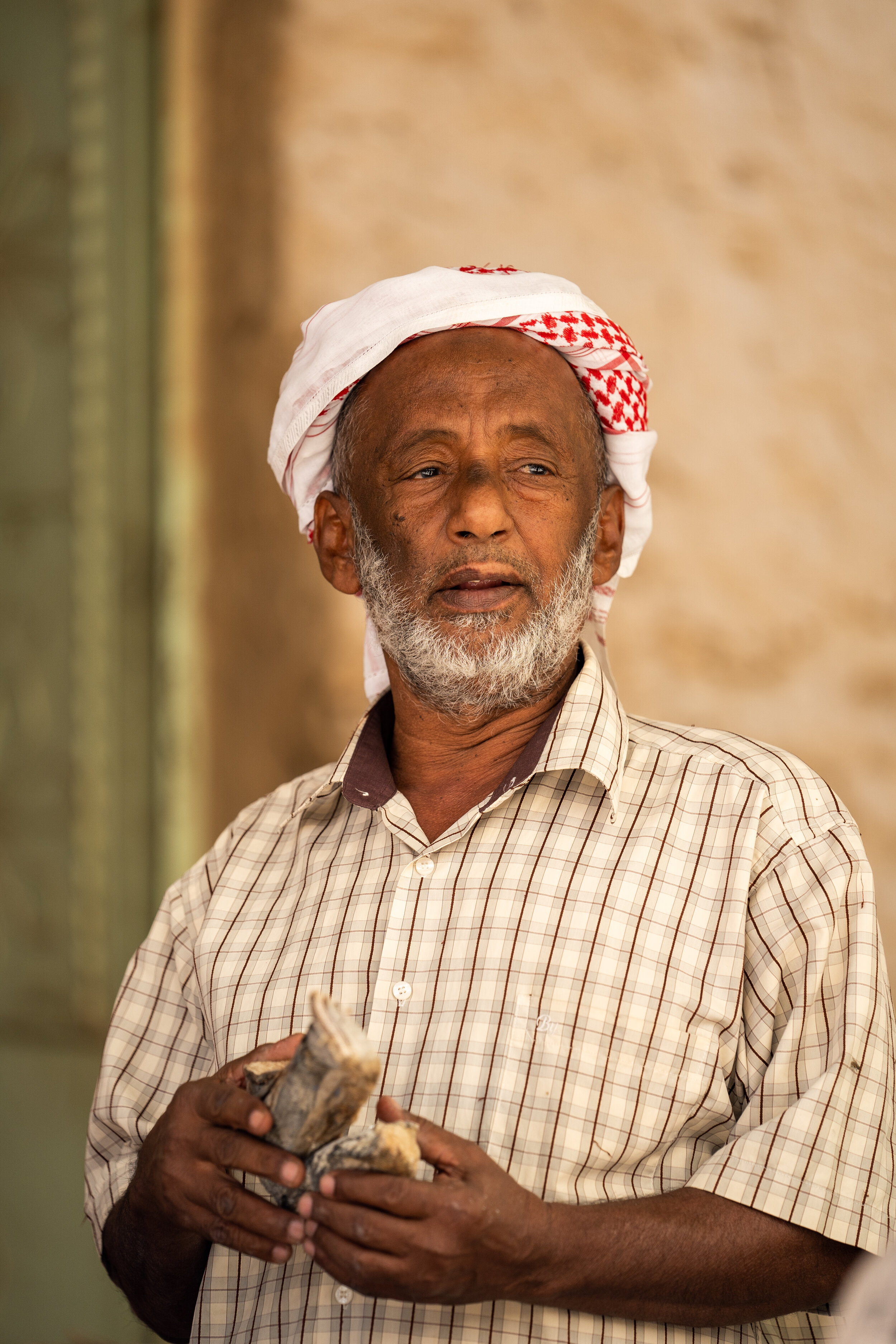

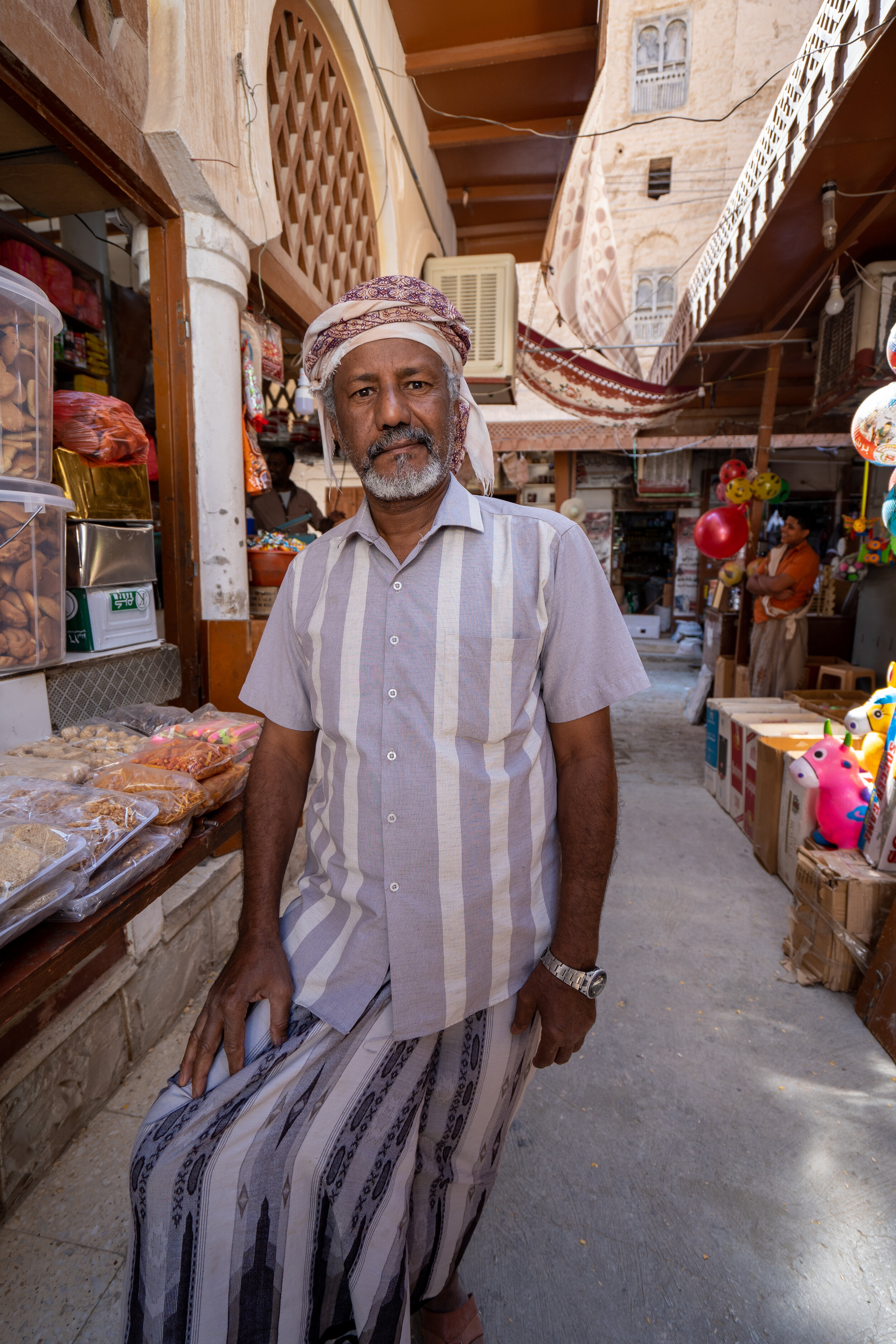
Marketeers of Tarim
Tarim, Hadhramaut, Yemen. November, 2019.
Tarim’s Old Town Souq is one of the most lively old style markets in the Hadhramaut. Here, marketeers sell everything from farm equipment to dried fish and clothing along narrow goods-filled alleyways. Being a centre of global Sufi learning, Tarim attracts overseas students, mostly from Malaysia and Indonesia. Many of the market stalls cater to them as well.

Schoolgirls in Sif
Sif, Hadhramaut, Yemen. February, 2020.
After spending a few hours at a girls school in the town of Sif meeting with students and teachers, we said our goodbyes and walked out onto the street. But that didn’t stop the girls from following us, as they gathered in the school’s windows to wave goodbye again and see us off.

The Palace behind the Palace
Buqshan, Hadhramaut, Yemen. February, 2020.
From the top of the Buqshan Palace you can see right into an adjacent palace of near equal size and splendour. However, unlike the Buqshan Palace who’s owners have long moved to Saudi Arabia, this one is still occupied by its original family. It remains a splendid example of Hadhrami architecture.
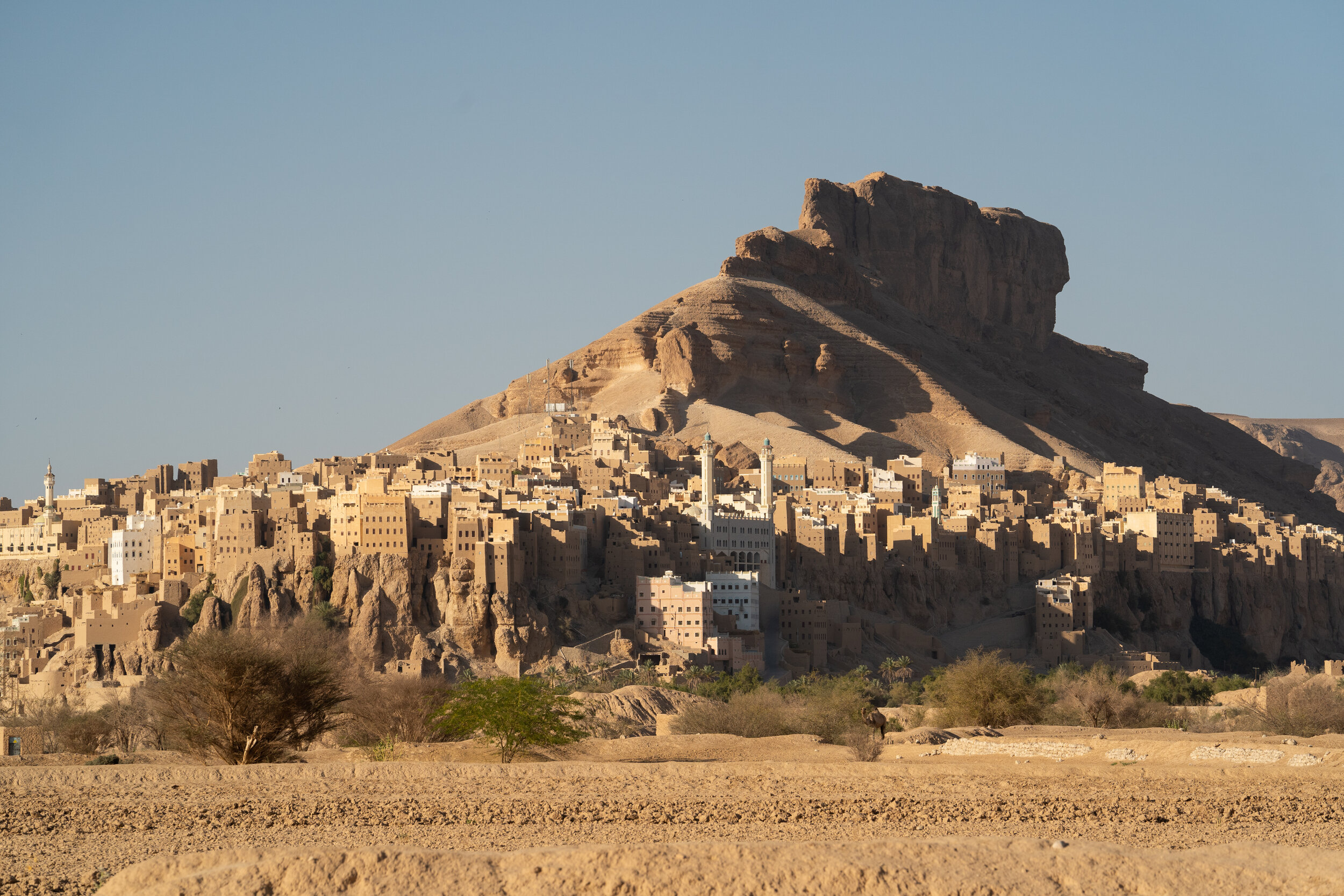
View of al-Hajhrain
al-Hajhrain, Hadhramaut, Yemen. February, 2020.
Near the split between Wadi Hadhramaut and Wadi Do’an there lies the village of al-Hajhrain. Made almost entirely of mud-brisk buildings, this impressive village is famous for its Sedr honey production. Sedr honey is made by bees in the valley and has a unique flavour to it, and it comes with a hefty price tag. It’s also commonly referred to as “grooms’ honey” as it is considered to be an aphrodisiac.


Girls School
Sif, Hadhramaut, Yemen. February, 2020.
The girls school in Sif is a lovely place full of passionate teachers, excited students and dedicated learners. Compared to the boys school, there was much more passion here. In fact, this school has a higher graduation rate and student retention rate than the boys school.

Sunrise over Haid al-Jazil
Haid al-Jazil, Hadhramaut, Yemen. February, 2020.
The most magical sunrise in the Hadhramaut must be watching the rays of light pour over the canyon walls at Haid al-Jazil to illuminate what must be Do’an’s most magnificent looking village, perched upon a gigantic rock in the valley.

Sunset over Shibam
Shibam, Hadhramaut, Yemen. November, 2019.
The most magical sunset in the world can be enjoyed from a rock overlooking the “Manhattan of the Desert” town of Shibam. As the sun sets and the sky becomes pink, the muezzins’ calls to prayer from the minarets around the city fill the atmosphere with song. Kids drop their soccer balls and head to mosque before returning home for dinner.
